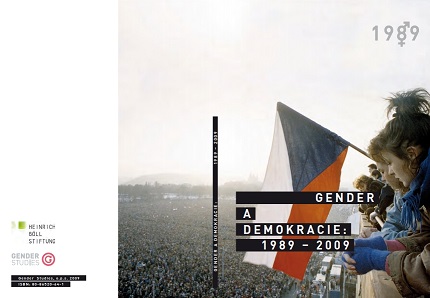
We kindly inform you that, as long as the subject affiliation of our 300.000+ articles is in progress, you might get unsufficient or no results on your third level or second level search. In this case, please broaden your search criteria.

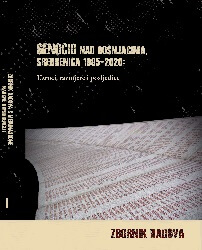
Genocid, genocid, genocid! Tom prividno poznatom riječju imenovani su progoni i ubijanja bosanskih muslimana u Srebrenici 1995. godine. Za to djelo osuđeno je više pojedinaca koji su ga domislili, podstakli i/ili proveli. Tom riječju, koju su izrekli suci, koju potomci i srodnici ubijenih ponavljaju kao molitvenu utjehu, užasnuta i ustrašena većina više je anestezirana negoli utješena. Ali riječi nemaju značenja izvan rečenice. Kada su im nametana korištenja u izdvojenosti, one postaju plastične. Čine se neprijeporno shvatljivim, a ipak su sve dalje od tog što njihovi korisnici hoće u žalosti i patnji, u ljubavi i mržnji te u nastojanjima da prežive i budu sretni. [...]
More...
In order to territorially expand and create a homogeneous demographic picture, “ethnic cleansing” and genocide against the non-Serb population of Podrinje was prepared first in academic, then in military circles, in our neighboring country of Serbia. The goal was to ethnically cleanse (brutally remove) the Bosniak population in every possible way from an area that covers at least fifty kilometers from the Drina River to the central part of Bosnu i Hercegovinu. The “ethnic cleansing” of that area from non-Serbs also had the intention of a “final showdown” with the undesirable, unpopular element, the remnants of the Turkish conqueror, as they labeled the Bosniak corps. Thus, the first aggressor strikes began on the eastern border and during April 1992, the entire Podrinje area was occupied, with great destruction, expulsions, imprisonment, terrorism and the cruelest crimes that reached their peak with the Srebrenica genocide. Permanent crimes and complete “ethnic cleansing” throughout the war period completely devastated the prewar demographic picture of the entire Bosnian Podrinje area. In this paper, we will analyze the causes, extent and consequences of the devastated demographic picture in 10 Podrinje municipalities, comparing the post-war census from 2013 with the pre-war census from 1991. Comparative analysis will show that war destruction, crimes, “ethnic cleansing” and genocide against Bosniaks in Srebrenica and other Podrinje municipalities caused large demographic, quantitative and qualitative changes in ethnic structure, gender, age, working age, education, culture and all other segments of life.
More...
Nedavno sam u Oslobođenju od 5. juna ove godine polemizirao s dvojicom Pentagonovih analitičara za vanjska vojna pitanja. Naime, ova su gospoda u New York Timesu objavila svoj prijedlog da Ujedinjene nacije, da ne bi rat trajao unedogled, nagrade srpskog agresora predajom Srebrenice, Žepe i Goražda srpskim secesionistima, a u zamjenu da se Sarajevo u cjelini vrati pod kontrolu bosanske vlade. Kao što je poznato, ovaj prijedlog ranije je lansirala agresorska strana, a analitičari Pentagona to su uvrstili u tobožnje rezultate svojih istraživanja situacije u Bosni. Stavljanjem ovih, agresorovih, prijedloga kao svojih u njihovim analizama svakako dobija sasvim druge dimenzije i snagu vjerodostojnosti, kao da su zaista izišli iz laboratorija Pentagonove pameti, koji se potom distribuiraju pod šifrom “strogo pov” najbližim Clintonovim saradnicima i njihovim prijateljima u Kontakt-grupi, a potom šire preko UN-a Ghaliju, Akashiju, Janvieru, Smithu i da ne redam dalje, radi pripreme terena da se u najpovoljnijem trenutku to i realizira. [...]
More...
Živimo u vremenu sve većeg kršenja ljudskih sloboda i prava, s težnjom da se ona urede i normiraju brojnim i raznovrsnim zakonima, a evidentno je i sve prisutnije njihovo kršenje na najbrutalniji način kroz počinjene brojne oblike zločina protiv čovječnosti i međunarodnog prava. Iz ovoga je više nego jasno da su izvori i subjekti, kako ugrožavanja tako i ugroženih, sve brojniji i raznovrsniji, što se vezuje za ostvarivanje osnovnih ljudskih, civilizacijskih i kulturnih potreba, kao što su potrebe za identifikacijom, pripadanjem i zaštitom od ugrožavanja. To se manifestira kao univerzalni ljudski i društveni problem, koji je i društveno i naučno značajan. [...]
More...
Moralno-pravna i politička obaveza svijeta Evropske unije i Bosne i Hercegovine jeste ne samo spriječiti buduće, civilizacijski katastrofične i neprihvatljive zločine poput genocida nad Bošnjacima u Srebrenici i oko nje nego, i prije svega, spriječiti njegovo planski aktivno i političko, medijsko, kvazinaučno, sistematsko poricanje i negiranje, kakvome svjedočimo danas i svih poratnih godina u Bosni i Hercegovini i njenom susjedstvu. Tačnije Srbiji, koja je imala “političko mentorstvo” nad genocidom, uporno pokušavajući izbjeći ono neizbježno – svoju vlastitu odgovornost za plansko, praktično učešće i političko i vojno saučesništvo koga je potpuno svjesna. [...]
More...
Domestic violence is widespread in contemporary society, at the level of all social categories and deeply rooted, with serious effects on the health, quality of life and well-being of victims and their families. This scourge is not only a social and public health problem, but also a problem of non-respect and violation of human rights, its complexity requiring the active and direct intervention of the responsible national authorities, both in terms of providing support measures. protection of the personal integrity of victims, as well as the protection of their common social interests, such as the freedom and dignity of the person.
More...
Na temelju primjera i istraživanja predstavljenih u poglavlju četiri, ovo poglavlje razmatra vulnerabilnosti žrtava i percepciju ranjivosti koja proizlazi iz kombinacije rodne nejednakosti s drugim društvenim i ličnim karakteristikama i preprekama zbog kojih učinioci smatraju da će imati lakši pristup potencijalnim žrtvama ili da ove osobe neće imati kapacitet da prijave silovanje i seksualni napad, ili da će im prijavljivanje biti onemogućeno. Grupe o kojima govorimo u ovom poglavlju jesu osobe koje su najčešće izložene višestrukoj diskriminaciji zbog toga što su žene, osobe sa invaliditetom, pripadnice manjinskog naroda, izbjeglice ili migranti. I kada su ohrabrene da prijave djelo, ove osobe su često izložene dodatnom preispitivanju, dvostrukim predrasudama i nepovjerenju.
More...
Za razliku od kaznene politike zakonodavca za određena krivična djela koja je najčešće poznata samo stručnoj javnosti, kaznena politika sudova je poznata široj javnosti i na osnovu nje se stvara dojam o efikasnoj ili neefikasnoj zaštiti nekog pravnog dobra. Stoga je izuzetno značajno da sud prilikom odmjeravanja i izricanja kazne za krivično djelo silovanja uvažava ne samo zahtjeve specijalne prevencije već i zahtjeve generalne prevencije, i to tako što će kazna izrečena konkretnom učiniocu ovog krivičnog djela djelovati ne samo na njega da ubuduće ne vrši ovo ili slična krivična djela već i na sve potencijalne učinioce seksualnih delikata. Ovakav pristup svrsi kažnjavanja zahtijeva maksimalno zalaganje sudova u postupku odmjeravanja kazne kako bi se, na osnovu postojećih olakšavajućih i otežavajućih okolnosti, odmjerila optimalna mjera kazne koja će zadovoljiti zahtjeve i specijalne i generalne prevencije. Izrečena kazna trebala bi zadovoljiti i zahtjeve pravde i pravičnosti, odnosno morala bi predstavljati i adekvatnu satisfakciju za žrtvu krivičnog djela.
More...
In order to best deliver justice to victims of rape and sexual violence, judges must understand their real vulnerabilities, as well as perceptions of vulnerability that arise from a combination of gender inequality and other social and personal characteristics of a victim and make them targets of perpetrators. These factors lead perpetrators to believe they will have easy access to the victim, or that the victim will not have the capacity to report the assault or will be prevented from reporting. Among the groups discussed in this context below are some of the people most frequently exposed to multiple layers of discrimination – because they are women, disabled, members of a minority community, refugees, and/or migrants. Even when they report a rape, these individuals are often exposed to additional review, double prejudice, and distrust.
More...
Unlike the sentencing policy of the legislature for certain criminal offences, which is mostly known only to legal professionals, the sentencing policies of courts are known to the general public and serve as the basis for their impressions about how effectively the public good is being protected. Therefore, it is extremely important for judges to recognize not only special prevention requirements but also general prevention requirements at the sentencing stage in crimes of sexual violence, so that the imposed sanctions affect not only the perpetrators and act as a deterrent from future criminal acts but send a message to all other potential perpetrators of sexual offences, too. Such an approach to the purpose of sentencing requires maximum engagement by courts in the sentencing process, in order to determine optimal sanctions based on existing aggravating and mitigating factors. Any imposed sanction should fulfil both justice and fairness requirements and should adequately satisfy the victim.
More...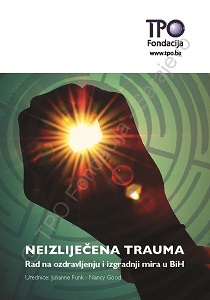
Nakon strašnih zločina počinjenih u Bosni i Hercegovini i regiji, koji su uključivali masovna ubistva te silovanja žena i muškaraca, brojne preživjele i žrtve i dalje žive u sjeni stigme i šutnje koju su im nametnule etno-nacionalističke agende, ali i kulturne i religijske norme da bi se zaštitili ponos i čast porodica i nacija. Stvaranje i reproduciranje kulturnih i političkih narativa produbljuje traumu i patnju politizacijom i etnizacijom statusa žrtve. Prevladavajući diskurs neoliberalnih i etno-nacionalnih matrica (zlo)upotrebljava preživjele za vlastite politike i ciljeve, dok istovremeno preuzima ulogu čuvara njihovih interesa. Čitajući narative žena iz Bosne i Hercegovine (BiH), istražujem na koji je način etno-nacionalni diskurs žrtve utišao brojne žene i otuđio ih od preživjelih koje pripadaju drugim etničkim grupama. Zajedno sa neoliberalnim razumijevanjem i očekivanjima koja se pripisuju identitetima žrtve/preživjele, taj diskurs otuđuje žene iz vlastite etničke grupe jer mnoge odbijaju politizaciju iskustva i upisivanje etničkih narativa po svojim tijelima. Jedno od rješenja za nametnuto pozicioniranje i etiketiranje može biti zahtijevanje prava na samoidentifikaciju, kako navode Rebecca Stringer (2014) i Alyson Cole (2006) ili omogućavanje “oslobađajuće epistemologije” s tijelom žene kao mjestom značenja i iskustva, kako predlaže Tamy Spry (1995: 27) u svom radu na usmenoj historiji. U ovom radu razmatram: 1) politiku i etnizaciju tijela žena 2) na koji način feministička debata i jezik o žrtvi, preživjeloj i moći djelanja (engl. agency) osnažuju ili obesnažuju žene u suočavanju s vlastitim identitetima i njihovom poimanju 3) kako prevazići binarnost žrtva/preživjela koju su nametnuli međunarodna donatorska politika, nauka i ženske organizacije te kako omogućiti novi vokabular samoidentifikacije.
More...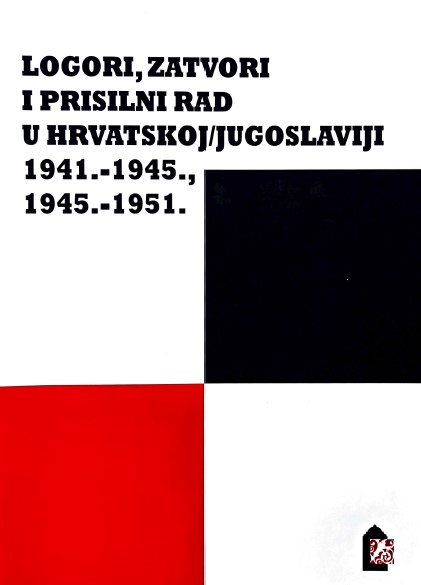
This work attempts to show the plight of the civilian population in the territory of the Independent State of Croatia in concentration camps on the basis of the partially revised list “Žrtve rata 1941-1945” (Victims of War, 1941- 1945) first published in 1964. On the basis of results obtained from a revision of the list according to current trends in the analysis of the data, the number of deaths that occurred in the camps is calculated somewhere between 173,800 and 184,800. An overview is made which analyzes the territorial origins of the victims, their year of death, the national structure (58.03% Serbs, 16.09% Jews, 12.83% Roma, 6.97% Croats, 0.95% Muslims, and 5.13% members of other or unknown origins), responsibility for deaths (the perpetrators of crimes – 85.25% Independent State of Croatia, 14.28% Germany, and 0.46% Italy), the sites where the most numerous executions were carried out are identified, and all of this is shown against the larger context of the general suffering that took place in the Independent State of Croatia and Yugoslavia.
More...
The study focuses on the concentration camp Loborgrad for women and children in Northwest-Croatia from the time of its erection in October 1941, till the deportation of nearly all of its internees to Auschwitz in August 1942. Its about 1500 mostly Jewish prisoners came from Bosnia (Sarajevo) and Nor-thern Croatia, apart from them were some Jewish refugees, among these many from Vienna, plus approximately 200 Serbian women. Before the deportations the latter were sent to Serbia or to Germany in order to perform forced labor. Apparently the camp was under the supervision of the ”Jews Department” of the Ustaša police, however the commander in chief Karlo Heger and the gu-ards belonged to the ethnic German group. Physical abuses are reported from the camp, during epidemics in 1941/42 up to 200 inmates died.
More...
With the establishment of the Independent State of Croatia, Vlado Singer and Stjepan Rubinić became high ranking officials of the security and police apparatus of the state. Due to their actions both fell afoul of their superiors and were removed from their positions. They served roughly the same amount of time at the concentration camps in Jasenovac and Stara Gradiška. In distincti-on to Singer, who was killed at the Stara Gradiška camp, Rubinić was released after spending a year in the camp. After his release from the camp he did not formally belong to the Ustaša movement, but he was allowed to conduct busi-ness with Jewish mercantile houses. Following the collapse of the Independent State of Croatia, he withdrew toward Austria, where he lived for some years, after which time information about him becomes unreliable. It is assumed that he lives out of the public eye, as a well-situated man, either in South America or Australia.
More...
At the time of the Second World War, Italian fascist military and civilian authorities carried out a thorough policy of Italianization in the occupied and annexed region of the eastern Adriatic. With the aim of a rapid realization of this goal, among other things, they created concentration camps for civilian internees in parts of Croatian Dalmatia. One of these camps was on the island of Molat in the Zadar Archipelago, through which by some accounts 10,000 individuals passed during the period of its existence from June 1942 to September 1943. But in this regard, what is uncertain and has been the subject of some controversy is the number of deaths that occurred at the camp. Namely, until now unsubstantiated claims of 1000 victims have been made, though recent research has only been able to establish less than 100 victims. Indeed the variance between real and fictitious death tolls at the camp in Molat is the reason why it was necessary to look at this issue in depth. The inflation of the number of victims, especially in postwar peacetime circumstances, until now as added to the difficulty in objectively assessing the real situation and directly functioned in creating an atmosphere of ideological-political commerce in victims due to so-called higher interests.
More...
One of the most acute problems of the war economy in National Socialist Germany was a lack of labour in industry and agriculture. Though Nazi planners through a series of legal measures paid close attention to a solution to this matter even prior to the outbreak of the war, it was reopened following the failure of the Wehrmacht on the Eastern Front. Taking workers out of factories and fields opened the question of labour supply in these areas vital to the war economy. Shortages in labour supply could only be made up by forced recruitment from occupied countries. Serbia was not an exception to this rule in occupied Europe. To achieve a more effective exploitation of labour supply, the Nazis introduced their own labour laws into occupied territory to drive production. Since they lacked adequate numbers of personnel in their occupation apparatus, they engaged the domestic administration to achieve the desired objectives. The population of Serbia was subjected to all the forms of forced labour which the Nazis applied to other occupied territories, from new labour laws to outright slave labour. The largest portion of forced labourers worked for German needs on the territory of Serbia itself, while the number of workers in Germany never exceeded 30,000-35,000 at one time. This represented less than half the number of workers that the occupation authorities planned to send to work outside of Serbia.
More...
In the last phases of the Second World War masses of people started to withdraw toward British positions in Carinthia. The majority of the refugees were captured before they crossed the Austrian border. A portion of those people that made it to Carinthia were handed over to the Yugoslavian Army by British forces. Their columns were turned back for the long march home, referred to as the “Death Marches” Passing through Slovenia these columns made it to Croatia. Behind them remained a large number of camps and mass graves. Using the extensive literature and available documents this article analyzes the camps formed on the march through Croatia (Mirkovci, Orosav-lje, Samobor, Jankomir, Kanal, Prečko, Maksimir, Karlovac, Čemernica, Sisak, Bjelovar, Lupoglav, “Danica” in Koprivnica, Osijek, Velika Pisanica, Krndija, Požega, Vinkovci). Numerous eye witness accounts tell of the daily experience of life in the camps – for the most part strict control of the camps, many citations, the sorting of inmates and the fear of being taken to the unknown, poor diet and unhygienic conditions, lack of medical supplies, and the general precariousness of one’s existence. Many available sources clearly demonstrate the strict control exercised by the newly established postwar regime over the territory of Croatia, or Yugoslavia.
More...
On April 6th, 1667, Dubrovnik was hit by a disastrous earthquake. Seven nunneries were destroyed in the earthquake and the eighth, the Convent of St. Peter and Paul, burnt down in a fire that broke out as a consequence of the earthquake. The data on the number of casualties are contradictory; therefore, so are the data on the number of casualties among the nuns. Due to the vast number of casualties suffered by the nunneries and nuns, there was the issue of their fate after the earthquake. Archbishop Torres took advantage of the temporary absence of authority and decided to leave for Ancona together with the nuns. In his report on the journey he claimed that he had arrived at this decision because he deemed the nuns vulnerable as the government was not able to provide them with adequate accommodation and the necessary enclosure. However, one might argue that the archbishop, in making this decision, was actually more worried about himself than the nuns. As he was a representative of the head of the Church, should he not have stayed and provided spiritual comfort to the suffering population, especially, as he himself states in his report, because the survivors among the people were happy to see him alive? What prevailed was probably the fact that Archbishop Torres, just like any other foreign archbishop, was not satisfied with his post and had not been able to fully integrate in the town or with its people, the majority of which did not speak Italian. Maybe the fact that someone needed to take care of the nuns who had survived was his perfect excuse to leave the Republic. Although the nuns were extremely well received in Ancona and were opposed to an instant return home, the government wanted to bring them back as soon as possible. Apart from the intimate feelings of concern for their daughters, sisters and aunts, there were economic reasons that motivated the government as well. Nunneries had great shares in Italian banks and as long as the nuns were in Ancona the interest payments, which the government wanted to use for the reconstruction of the convents, were suspended. Patriotism may also have been a motivation for a quickest possible return of the nuns as the government wanted to have the nuns on their own ground, thereby showing that the earthquake had shaken them, but had not destroyed their ability to look after their citizens. Their eventual hurry in bringing back the nuns, whom they had, at first, accommodated at the Franciscan monastery in Ston, is also documented by the letters the nuns sent them, in which they mostly complained about the poor accommodation and food.
More...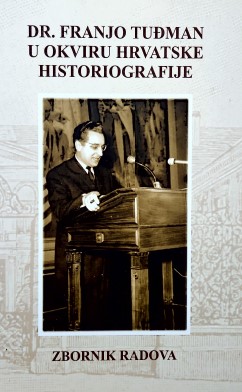
The Croatian public has formed its opinion regarding Franjo Tuđman as a historian almost exclusively from sentences in a speech that he delivered in Zagreb in late February 1990 which seems to suggest that he believed that most Croats in 1941 supported the Independent State of Croatia. Although he dedicated more than three decades of his life to historical research on topics related to contemporary Croatian history, debates in the Croatian media and among Croatian historians are still often focused on those sentences, which have repeatedly been quoted without any reference to Tuđman’s other work or to why he included them in his speech. However, an analysis of the content of those sentences suggests that Tuđman was attempting to approach the foundation of the Independent State of Croatia as a historian rather than as a politician, but that he simplified the complexity of that historical event in his speech. Although some critics have alleged that Tuđman holds revisionist pro-NDH views, an analysis of his numerous works and public statements shows that he never adopted such views. He remained a vociferous critic of the NDH and the Ustašas [the Croatian is now regularly used in scholarly publications in English] from his earliest historical publications to the end of his life. He condemned Ustaša crimes openly and without any hesitation. However, as a historian who during the 1960s had dared to challenge some Party dogmas about World War II in Yugoslavia and in Croatia, he became the object of serious attacks by some powerful circles within the Yugoslav People’s Army, the League of Communists of Croatia/Yugoslavia, and Yugoslav and Croatian historians. Many of those who attacked Tuđman labeled him a nationalist and did everything they could to prevent him from publishing results of his research. His analysis of historiographic and political stereotypes that treated all Croats as Ustašas was closely related to his research on the NDH and the Ustaša movement. His efforts to contribute to an accurate estimate of population losses in Yugoslavia during World War II consumed much of his time and energy during the period from the mid 1960s to the end of the 1980s. He attempted to deconstruct myths related to these population losses and to promote research based on relevant sources and data. There is no doubt that the Jasenovac myth was one of the main foci of his research. Since the myths surrounding Yugoslavia’s war dead were supported by the Communist regime, Tuđman faced not only criticism of his research but became a dissident and the object of the regime’s repression.
More...